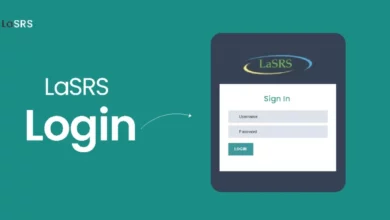
Have you ever encountered an ERR_SSL_PROTOCOL_ERROR message when using Windows to browse the web? Users are discouraged from accessing potentially hazardous sites by the error. But, while attempting to access a well-known secure site, you may see this error. Network problems, faulty or outdated system settings, malware, improper system cache, or malfunctioning browser extensions may have caused the error. This is how to fix ERR_SSL_PROTOCOL_ERROR on Windows if you receive the error when attempting to access a known, trustworthy website.
How To Clear Browser Cache & SSL State To Fix ERR_SSL_PROTOCOL_ERROR?
Clearing your web browser’s cache is one of the more basic fixes for receiving the error. Next, clear the SSL state after clearing the cache. Normally, selecting this option will address the problem with the error.
Note: Each browser has a different way of clearing its cache. Using another browser besides Chrome will give you an idea of what to search for in Firefox, Edge, Opera, and other browsers.
Well, to clear the browser cache and SSL state.
1 – Launch Google Chrome.
2 – In the top right corner, click the three-dot button.
3 – From the options, select More Tools from the menu.
4 – Choose Clear browsing data.
5 – Select Advanced and set the Time range to All Time.
6 – Choose all items from the list and pick the Clear Data button.
7 – Press the Windows key + R to open the Run dialog.
8 – Enter inetcpl.cpl in the Run line and click OK or Enter.
9 – When it opens, choose the Content tab at the top of the Internet Properties window.
10 – Click the option labeled Clear SSL state.
11 – When the verification message app displays, click OK.
12 – To exit the Internet Properties window, click OK once again.
Restart your browser after performing the preceding instructions, and the error should no longer show in the app.
Disable Browser Extensions
If the error persists, it may be because a third-party extension is blocking the site you wish to see. Hence, until the culprit is identified, you can disable every extension and turn them back on one at a time. To deactivate Chrome browser extensions.
1 – In the top right corner of your browser, click the three dots and then select Settings.
2 – Go to the Settings menu, where you may find and choose the Extensions options.
3 – Turn off all installed extensions.
Visit the site where the error message was displayed, and hopefully, it will no longer be displayed. Next, enable extensions one at a time to see if one is generating the error. After you find the culprit, ensure you have the most recent version or remove it if you no longer use it. Another option is reinstalling the problematic extension to see if it resolves the error.
Check Windows Security Settings
Incorrect setups of Microsoft’s built-in security suite, Windows Security, might occasionally cause the error. Controlled folder access, for instance, can occasionally interfere with ordinary operations. To check if the error remains, briefly deactivate the Windows Security app and visit the website. If not, ensure you turn the app suite security back on and try an alternative strategy. While in the security app’s settings, you should also set up Windows Security for optimal protection.
And if you’re using a third-party security suite, navigate into its settings and temporarily turn it off. Depending on your security software, the Firewall might get overzealous and sometimes block communications.
Change Internet Security & Privacy Settings
Site security and privacy settings may also prevent you from seeing the error. An error may result from too-strict settings. But lowering the security settings is simple. These settings are likely to affect Microsoft Edge users. To modify the level of Internet security.
1 – Launch the Start menu.
2 – Enter internet options and choose the top result.
3 – Choose the Security tab when the Internet Properties window opens.
4 – Move the slider to a lower level, such as Medium, under the Security level for this zone section.
5 – Click OK and then Apply.
If you visit, you should be able to access the site displaying the error. After gaining access to the required site, log back in and change the security level to minimum Medium-high, the default.
Conclusion:
Using one of the options mentioned above, if you receive the error, you can resolve ERR_SSL_PROTOCOL_ERROR on Windows while visiting a known safe site. Then clearing the cache in your browser should allow you to access the site.














